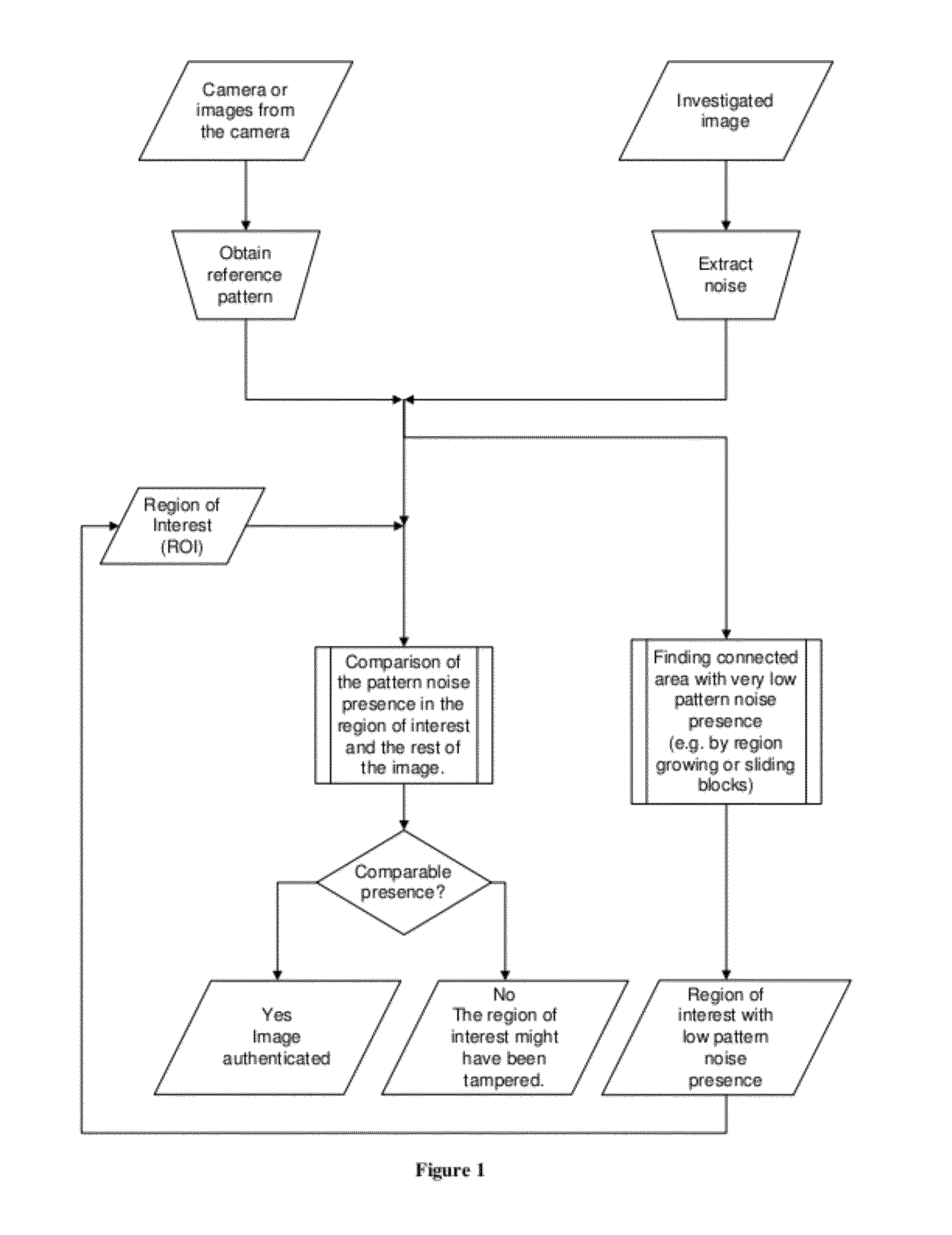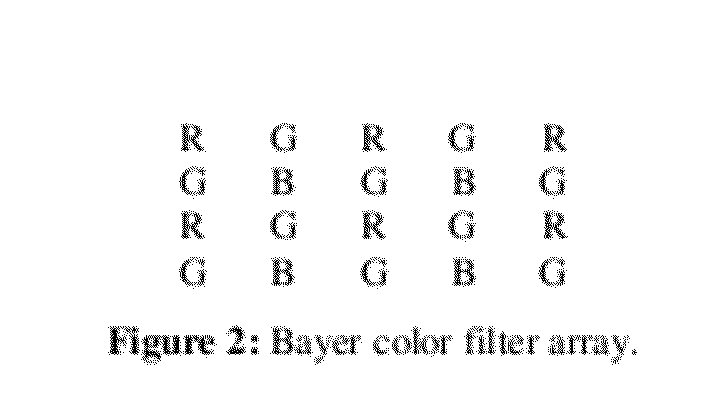Determining whether or not a digital image has been tampered with
a digital image and tampered technology, applied in the field of determining whether or not a digital image has been tampered with, can solve the problems of inability to detect forgeries, inability to detect copy-move forgeries, and inability to meet the requirements of the detection method,
- Summary
- Abstract
- Description
- Claims
- Application Information
AI Technical Summary
Benefits of technology
Problems solved by technology
Method used
Image
Examples
first embodiment
[0037]In the technique of the present invention, we correlate the extracted noise, from the image under examination, with the device's reference pattern, both from the region of interest only. We then compare the numerical value of this correlation to correlations obtained from other regions, of the same size and shape, different from the region of interest and randomly spread across the entire image. The numerical values of all correlations are then interpreted to reach a conclusion whether or not the correlation in the region of interest is an outlier.
[0038]The correlation ρC between the image noise Y−Fσ(Y) with the imaging device's reference noise pattern PC is calculated according to the following formula:
ρC(Y)=corr(Y-Fσ(Y),PC)=Y-Fσ(Y)-E{Y-Fσ(Y)})·(PC-E{PC})Y-Fσ(Y)-E{Y-Fσ(Y)}PCE{PC},(1)
where E{ } stands for the mean value.
[0039]When computing correlation in a given area A of the image, we work only with the part of the noise that corresponds to the area A: YA−Fσ(YA), as well as ...
second embodiment
[0040]the technique of the present invention does not use any a priori information about the location of the presumably forged region in the image under examination. This embodiment can find the region automatically, for instance, by sliding fixed-size blocks, or by region growing, etc.
[0041]Both embodiments of the technique of the present invention are relatively easy to implement. They work for images obtained with any digital imaging sensor, and they are robust to image degradation including, e.g., lossy (usually JPEG) compression, image processing, down sampling (resizing), or a combination of these forms of image degradation. Before using the technique of the present invention, one must first correct for resampling, because it desynchronizes the device's reference pattern with the image noise. Resynchronizing is usually easy to do because we know the “native” image size determined by the device sensor under investigation.
[0042]Referring to FIG. 3, the owner of this image (perso...
PUM
 Login to View More
Login to View More Abstract
Description
Claims
Application Information
 Login to View More
Login to View More - R&D
- Intellectual Property
- Life Sciences
- Materials
- Tech Scout
- Unparalleled Data Quality
- Higher Quality Content
- 60% Fewer Hallucinations
Browse by: Latest US Patents, China's latest patents, Technical Efficacy Thesaurus, Application Domain, Technology Topic, Popular Technical Reports.
© 2025 PatSnap. All rights reserved.Legal|Privacy policy|Modern Slavery Act Transparency Statement|Sitemap|About US| Contact US: help@patsnap.com



